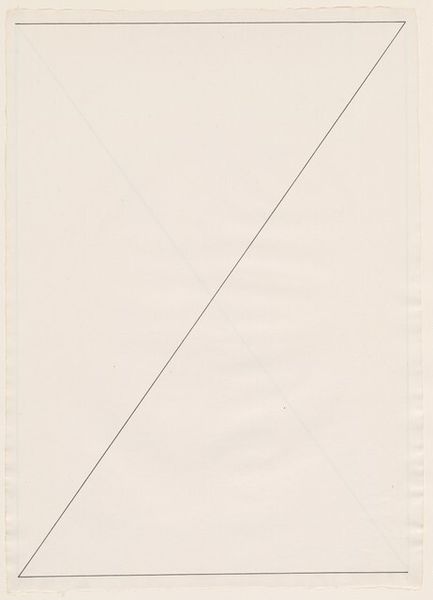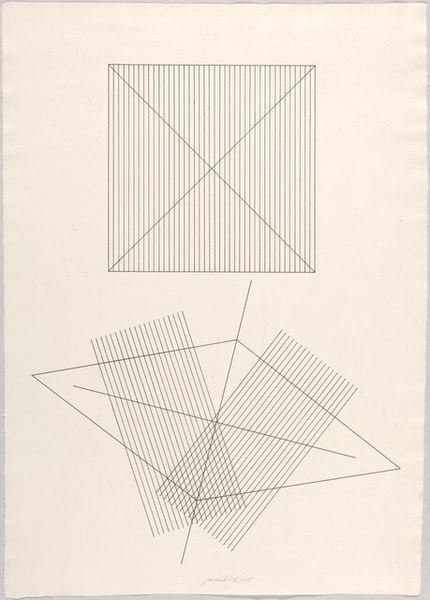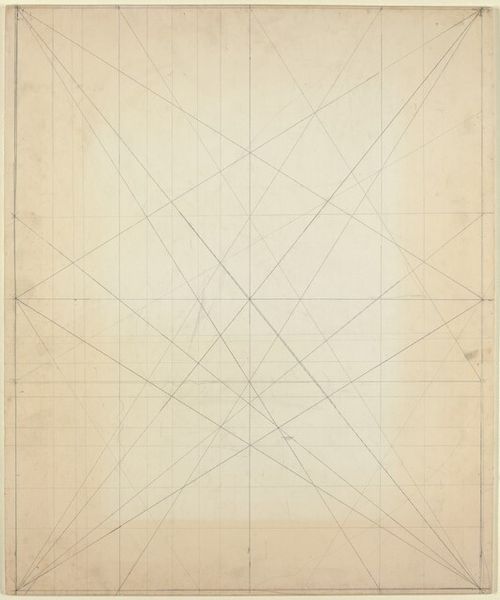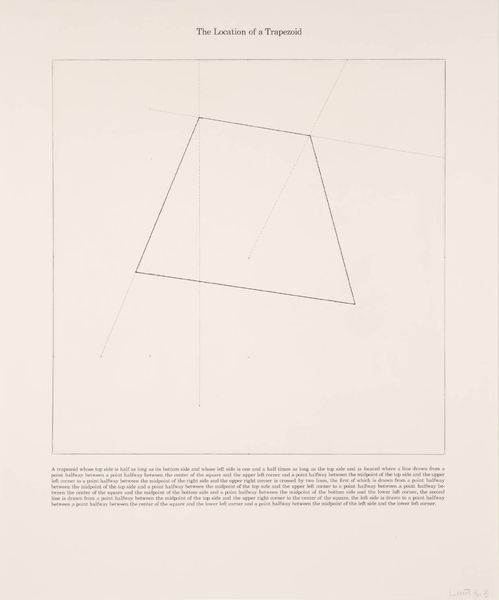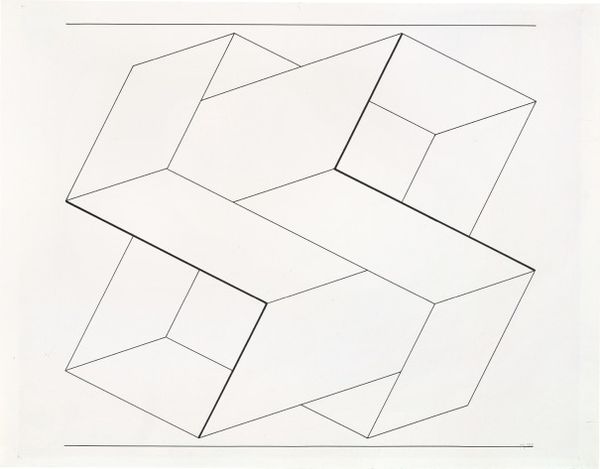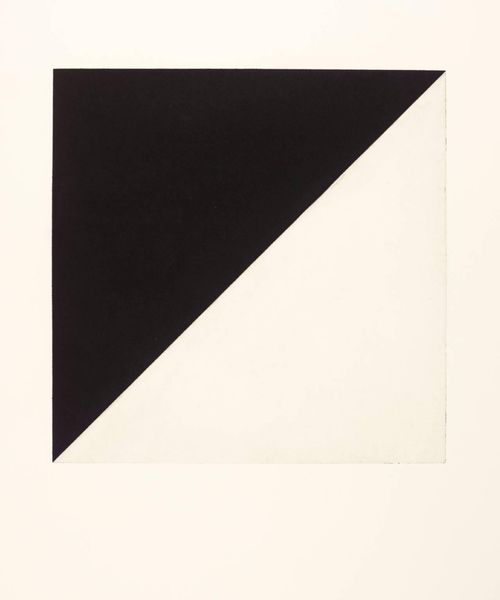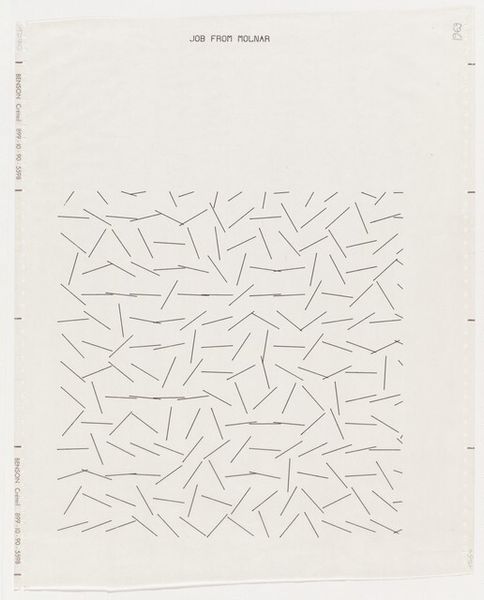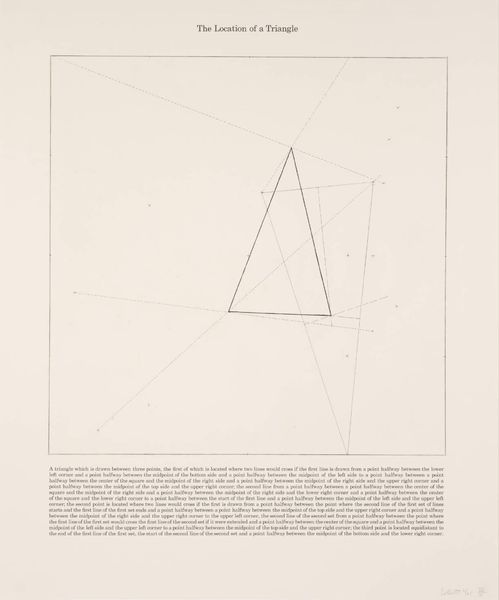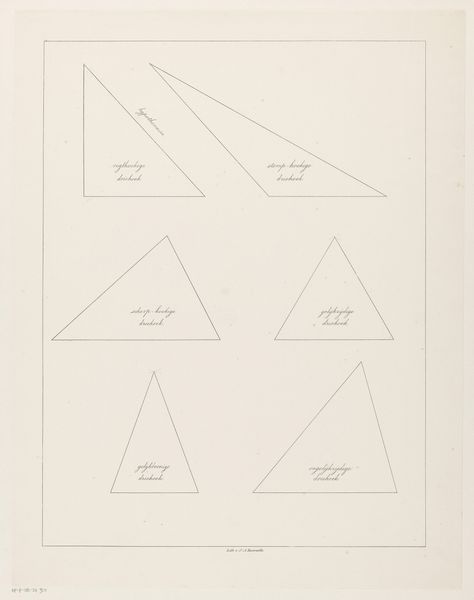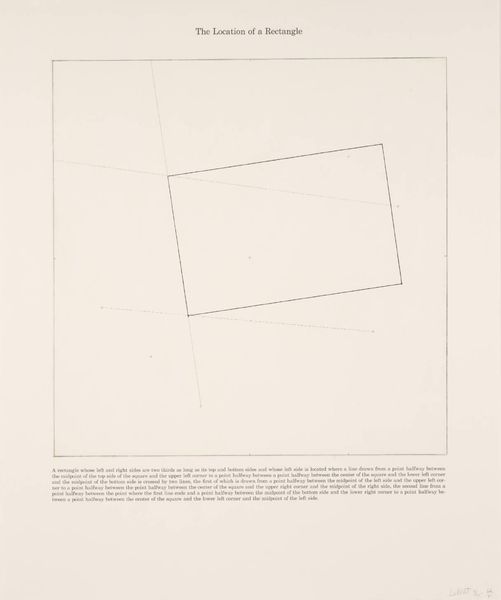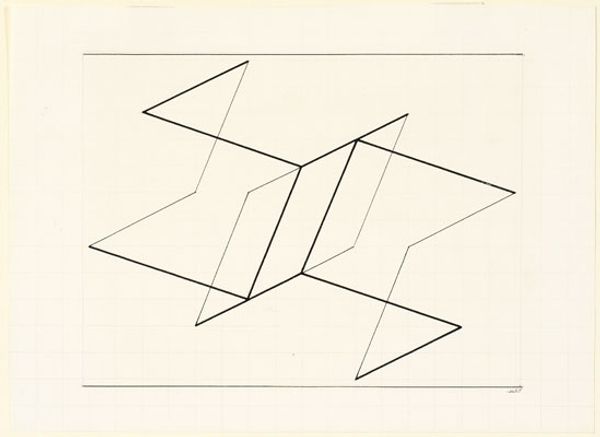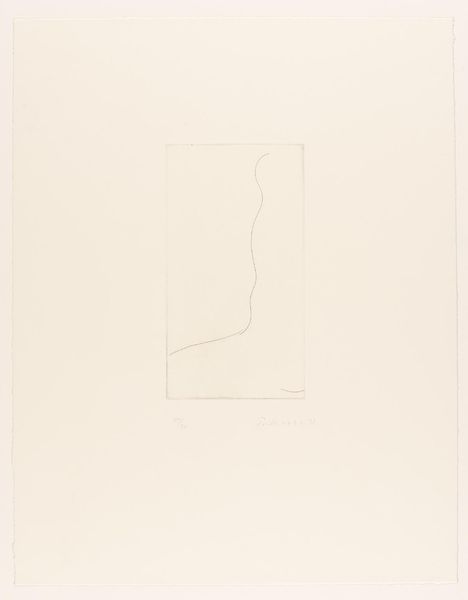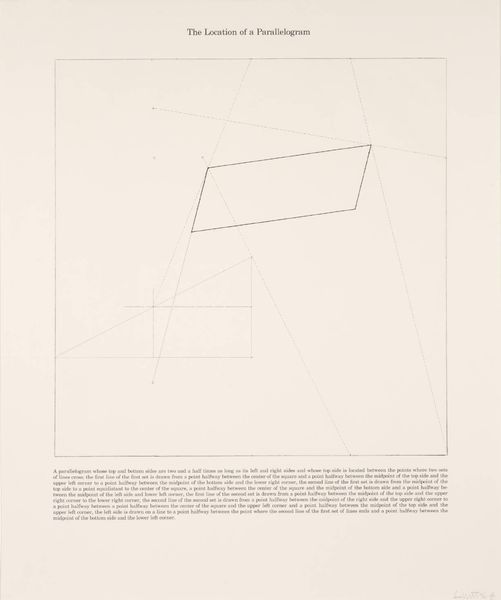
drawing
#
drawing
#
conceptual-art
#
minimalism
#
geometric
#
abstraction
#
line
#
modernism
Dimensions: image: 59 x 41.5 cm (23 1/4 x 16 5/16 in.) support: 71.5 x 51.5 cm (28 1/8 x 20 1/4 in.)
Copyright: National Gallery of Art: CC0 1.0
Curator: Here we have Jan Kubicek’s “Elementary Principles #3,” a drawing created sometime between 1970 and 1975. Editor: It’s…remarkably simple, isn't it? Two mirrored triangles hovering, or perhaps wrestling, over the blank page. Almost brutally minimal, yet there's a fragile kind of beauty. Like looking at a blueprint for silence. Curator: Yes, the minimalist aesthetic is key. Kubicek's work engages with the artistic and philosophical trends of the time. The focus was on reducing art to its most basic elements, rejecting expressionism in favor of pure form. We can think of its position within conceptual art, where the idea becomes the primary component of the artwork, more important than its aesthetic realization. Editor: Right, the *idea* of a triangle! Which, to be honest, I'm not totally against. But is there more to it than a thought experiment rendered in pencil? The precision, for example. It teeters on the edge of perfect, then subtly subverts it with faint, visible traces from its making. And for what? Curator: I'd argue that slight imperfection is precisely the point. These subtle flaws allow us to grasp the process involved in the drawing’s construction and the concept underlying its creation. And the institutional support for it –how museums legitimize minimalism as a movement... it's fascinating. The very act of displaying this, a drawing of such unassuming simplicity, asks questions of value and the role of art in the modern world. Editor: That's where it starts getting interesting for me. Is this "art" because it challenges preconceived notions of beauty? I find its openness… refreshing, as opposed to oppressive. It allows the viewer to become a collaborator, completing the composition. And maybe that’s where the meaning truly resides –in the interaction. Curator: Precisely. Its significance lies as much in its creation as in how the culture around it receives and interprets it. Kubicek asks the viewer to consider the foundational principles of visual representation and challenges the traditional hierarchy of artistic skills, which is one element of its cultural and historical context. Editor: Right, a deconstruction that's so… polite, you almost miss the revolution happening on the page! Curator: Indeed, and perhaps that's the revolution's staying power—its subtle invitation. Editor: A little push for thought! Nice.
Comments
No comments
Be the first to comment and join the conversation on the ultimate creative platform.
